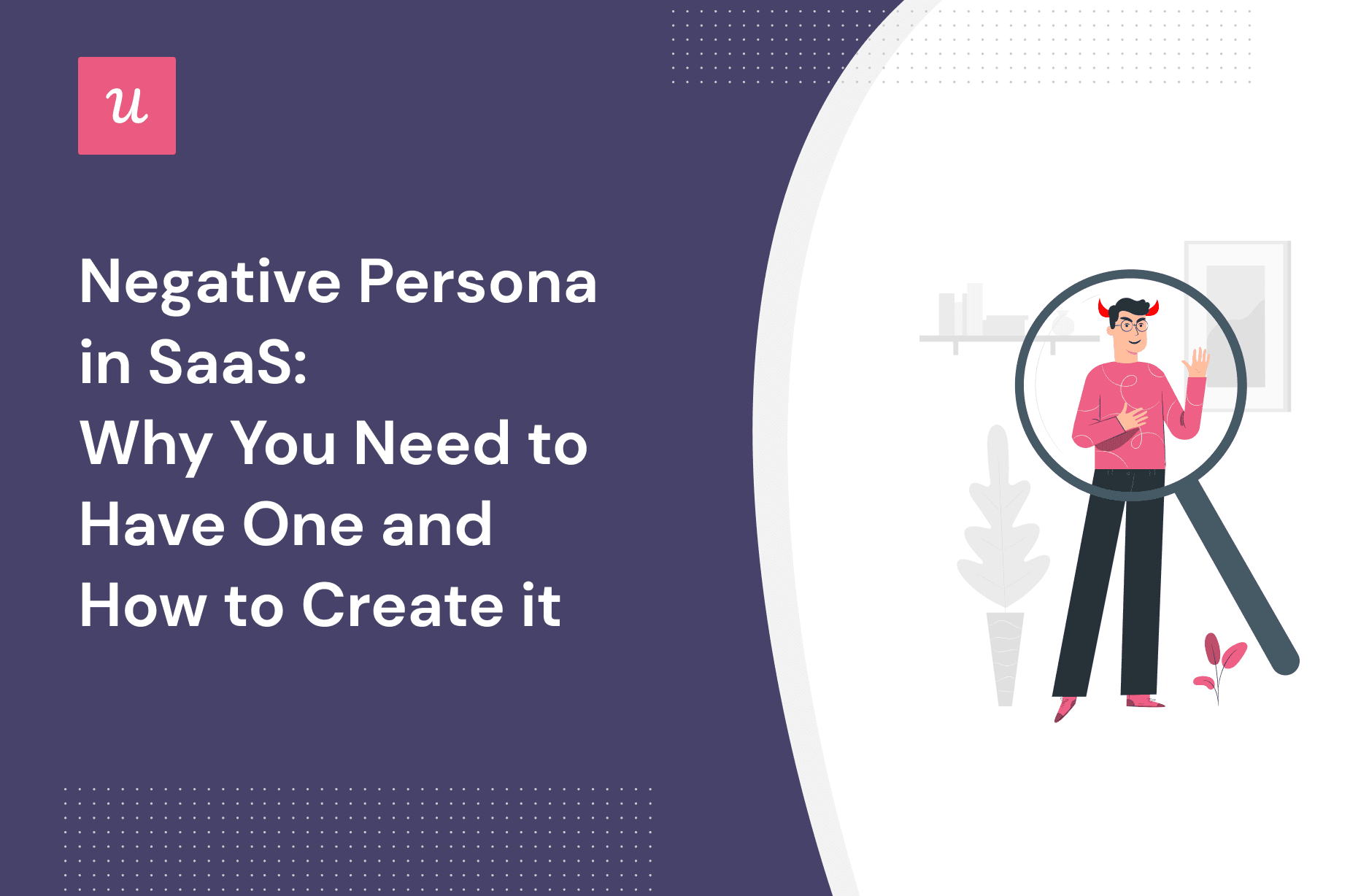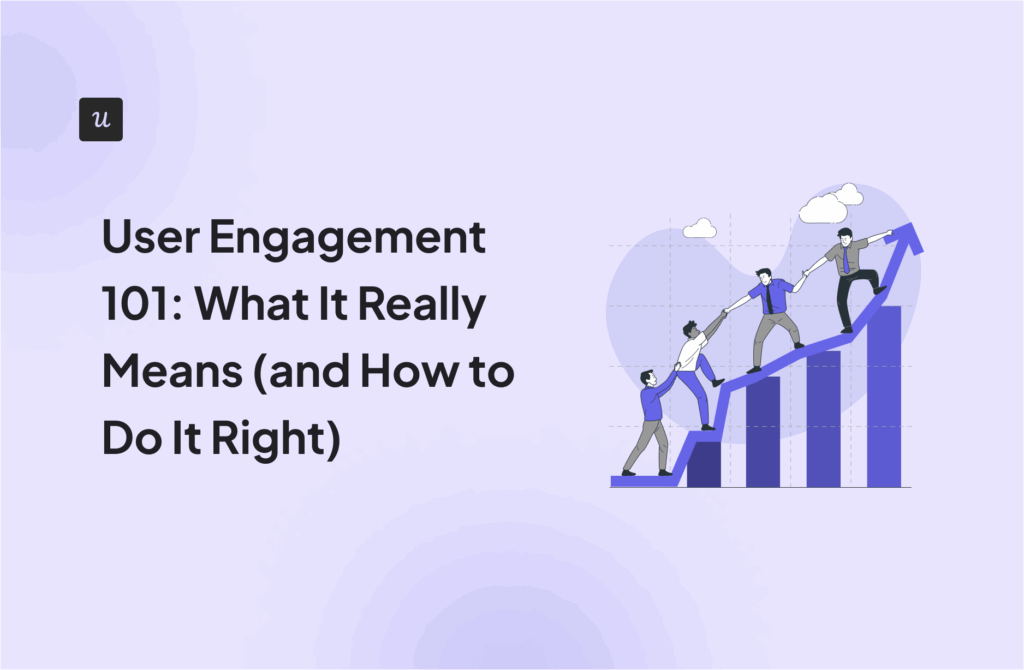
Negative Persona in SaaS: Why You Need to Have One and How to Create It
From a marketing standpoint, it first seems like a negative persona shouldn’t be a major worry.
Sure, every product marketer appreciates the importance of knowing their ideal buyer personas to help cultivate the right leads.
But what about the customer on the opposite end? This article will examine negative personas, what makes them essential for SaaS businesses, and how you can build one.
Try Userpilot Now
See Why 1,000+ Teams Choose Userpilot

What is a negative persona?
A negative persona is a semi-fictional representation of your least likely customer profiles. They’re also called exclusionary personas, and they’re a collection of the needs, values, and behaviors of individuals that differentiate them from your ideal customer.
Negative persona vs. Negative buyer persona
Often used interchangeably, “negative personas” and “negative buyer personas” refer to different sides of the same concept.
You create a negative buyer persona to capture the decision-makers. These can be people in accounting or management positions who are unlikely to decide in favor of your product.
On the other hand, negative personas, like user personas, refer to actual product users who do not fit your product. You identify negative personas using their behaviors, motivations, and needs.
So, negative buyer personas are more significant to the sales and marketing teams, whereas negative personas are more significant to product teams.
Why are user personas important?
A user persona represents the individual who benefits the most from using your product. It is your ideal user, curated using quantitative and qualitative research.
Although they may not always refer to paying customers, user personas capture the biggest pain points and motivations of those who use your product. This information helps you create user journey maps, which make it easier for end users to use your product.
Why should you create a negative persona?
If negative personas are less than ideal users for your product, why bother creating them? What makes negative buyer personas important?
To understand what is a bad customer fit for your SaaS
Achieving product-customer fit is essential to improving customer loyalty, customer retention, and customer success. Knowing the types of customers you don’t want helps you achieve customer fit faster while averting the feature-fallacy trap.
This means you have a better idea of what your customer needs, and don’t waste time building features no one uses because they don’t fit the customer’s needs.
By identifying your product’s negative personas, you can reduce the likelihood of falling into a product death cycle.

To use the process of creating negative personas to optimize your ideal user persona
Perhaps the most ironic benefit of creating negative personas is that they help deepen your understanding of your ideal personas – making your product development and marketing efforts even more accurate.
Determining why your products may not be a fit for some users may lead to new findings about the pains, desires, and jobs to be done by your target customer.

To avoid wasting your time and effort on the wrong people
Trying to market to everyone is the fastest way to build up an unreasonably high acquisition cost. When you define negative personas, you avoid wasting time and effort on the wrong people.
Outline identified customer pain points and adjust your messaging
Every good product message highlights your value proposition and the benefits of your product to your ideal customers. It shapes how you’re seen and sets the tone for your marketing campaigns.
Negative personas identify users you shouldn’t be targeting with your messaging, which helps you fine-tune your message and attract higher-quality leads.
Optimize your marketing strategies
Curating a winning marketing strategy requires complete knowledge of your target audience and how best to reach them.
Using negative personas, you can better curate a product marketing strategy that avoids the wrong audience and addresses the needs of your target audience.
How to collect data and build negative personas
Negative persona creation doesn’t have to be difficult. You can easily construct negative personas if you gather data and properly evaluate it. The following steps can help you do just that.
Identify characteristics of your negative personas
Your first step when creating a negative persona should be characteristics identification.
For instance, do you have a group of customers that never use your product as intended or never convert into paying customers?
These are the wrong customer fit for you.
Use feature tagging within your product to learn how users interact with your product features and identify negative personas among them.

Interview churned customers to learn more about your negative persona
Take advantage of cancellation emails to interview churned customers and understand why they churn. Use this opportunity to find out if they were an unsuitable fit for the product, and why.

Were they unhappy with the product or service? Did any specific issue force them to leave? Why do they feel their goals didn’t align with the product? What was their primary pain point(s)?
You may also want to review the customer’s record on your end. Did they consume too many resources? Were they challenging or difficult to manage? If so, why’s that?
Use cancellation surveys to collect more data
Following on from the above, be sure to build automatic churn surveys into your cancellation flow.
Cancellation surveys should be brief and include both closed and open-ended questions.

Ask customer service teams for data insights
Always build negative personas around data from real-life scenarios. Spend time with your internal teams, such as the customer service teams, to understand the problems that customers face.
You can also gather insights from your sales and marketing teams about potential customers or leads who hang around your content but never use your service.
Segment negative users
Identify and segment negative users who sign up for your product. Users who sign up for your product but fail to use it as intended are clearly not the kind of users you want to target.
Segment inactive users to identify and group the negative ones.
Use behavioral segmentation to examine the behaviors and in-app activities of inactive/churned users. Identify common features and trends to help you build a negative persona.

Tag and track negative profiles
What if you’ve already found some negative profiles among your customers? Be sure to tag and track these users.
Set up in-app workflows and alerts with triggers that help you identify when a negative persona is switching to a positive one.

Use negative personas to nurture the right audience
Negative personas can assist you in determining where to best invest your funds and which audiences to avoid.
Once you’ve identified trends that reveal negative personas in your customer base, you want to optimize your marketing budget by focusing your resources on those that produce returns.
Look for trends and similarities among negative personas
You might have multiple negative persona profiles just like you could have several user personas. Examine each profile to identify trends and similarities between them.
For example, what trends exist between negative buyer personas who never convert from free trial to paid users? Can you use these trends to segment new users and measure what percentage of them may be negative profiles?

Always add to your negative persona profile
Data is a continuum. Continue consulting your data to help you fine-tune or update your negative personas.
Watch out for trends and characteristics that characterize a negative persona.

As your audience grows, your sample size increases, and your data becomes more precise. The more you learn about those who don’t convert or those who aren’t a good fit for your product, the better your marketing strategy becomes.
Ask the right questions to your team
Finally, if you want to learn more about your customers, you must always ask the right questions. Ask your team about their experiences with your customers to proactively identify negative users. You could ask questions like:
- What customers are hard to work with? Why?
- What customers don’t stay with you very long? Why?
- Why customers leave negative reviews about your company?
- What customers generate the least revenue?
- What customers have the highest acquisition cost?
How to identify negative personas with Userpilot
Your customer’s product usage data is a treasure chest of information if you can harness it. Userpilot helps you do just that, providing you with the data you need to build negative personas.
Here are some ways it can help you:
Collects data from your users at multiple touchpoints
Who are your customers? What do they like/dislike about your service? What features do they use the most?
In addition to tracking users’ in-app behavior to learn the answers to some of these questions, Userpilot allows you to collect data directly from users with user persona surveys.
Use microsurveys to ask users about their experience with your product. What did they value the most? What challenges are they facing? Using NPS surveys is a good start.

And with mobile features, you can trigger NPS surveys directly within your mobile app, effortlessly gathering valuable user insights on the go.
As the responses begin rolling in, track them from the comfort of your easy-to-use dashboard, making it easier to identify trends in the responses.

Based on the collected responses, you can identify what features your power users value the most and what jobs they use your product for. If someone doesn’t have similar jobs-to-be-done (JTBD) or needs, they may fit a negative persona.
Build cancelation surveys to understand why users churn
No matter how hard you try, you’ll always have users that churn. Userpilot helps you ensure even these users become a part of your learning process.

Collect data from users after they decide to cancel or downgrade their subscription plans. Use churn surveys to identify the major reasons why your users churn. Work with this data to improve your product for your existing customers.
The collected data can also help you identify negative buyer personas for your product and avoid targeting them. Ultimately, this data both improves your product and reduces churn.
Segment existing customers to identify negative personas
Once you’ve identified the traits that differentiate a negative user from your ideal customer, Userpilot helps you segment users based on those traits.
Proactively identifying negative personas helps you avoid wasting resources on them. You know they’ll still churn in the end as they aren’t the right fit, so you can expend more resources on users who will actually get value from your product.
You can conduct regular NPS surveys and segment users based on their responses. Reach out to users with low NPS scores to understand the reason behind their low ratings.

Conclusion
A negative persona is a treasure chest if you know how to benefit from it, and how to proactively identify it. Building out negative personas helps you optimize your inbound marketing strategy, focusing your marketing budget on only the best possible leads.
If you would like to learn more about how Userpilot helps you create and optimize negative personas, be sure to book a free product demo!






